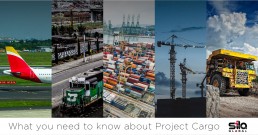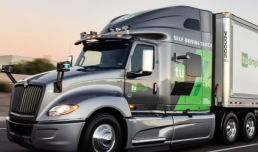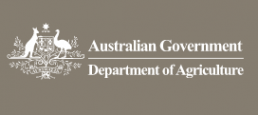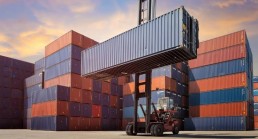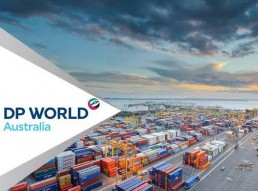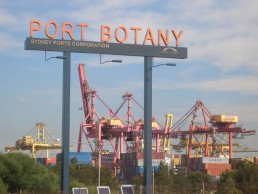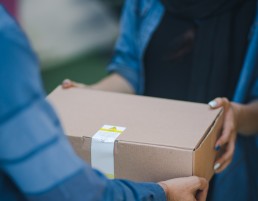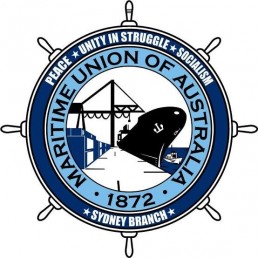Project Cargo Explained
Project Cargo is a term used to describe the transportation of large, heavy, complex or high-value pieces of equipment or materials, both domestically and internationally. They’re often parts intended for a certain project, and most commonly in the construction, engineering, mining, oil, rail and energy industries. Project cargo, also referred to as Heavy Lift, is categorised by its complex shape, size or weight that makes movement of the item difficult. It will require an individual transport plan that could involve multiple channels and specific treatment.
Project or heavy lift cargo generally weighs between 1-1000 tonnes, and can have a width or height that exceeds 50 metres. It can be moved by land, sea, or air, and involve forms of transportation from planes, trucks, rail, cranes, ships or barges - sometimes a combination of these.
Project cargo tends to have a particular time-frame or specified delivery date that makes these shipments some of the most complex and detailed projects in the logistics industry. Not to mention, the cost involved with loss or damage of most project cargo can be very large, possibly millions of dollars. Typical Heavy Lift items include generators, turbines, wind blades, boilers, locomotives, boats, satellites, military equipment, and parts of oil rigs and production platforms.
In the last several decades, globalisation has increased the demand for large infrastructure projects worldwide and has supported a boom in manufacturing industries on almost every continent. Companies are seeking the most efficient transportation methods as they embark on large and expensive project cargo operations.
SILA provides door-to-door logistics services for project cargo both nationally and internationally, with proven capabilities in energy, construction, rail, metallurgical and mining industries. Our partner Sinotrans owns and operates a fleet of over 50 breakbulk vessels, as well as weekly container liner services ex-North Asia & China to Australia.
Here are some things to keep in mind if you have project cargo to be moved:
Planning is key
Complex cargo operations require attention to detail, and oftentimes a detailed engineering process in order to stay within the projected budget and delivery timeline. Pre-planning is the crucial step that leads to an effective operation, including the elimination of risks and reduction of costs.
Working with a transportation expert such as SILA Global can add an immense amount of value at every stage. We will advise on weight and dimension restrictions, manage possible risks or unforeseen events, and ensure detail-oriented pre-planning. We’ll also explore routing options and select the best option based on the cargo size, as well as undertake a budget projection to ensure you avoid extra duties, taxes and other miscellaneous costs.
Execution
The precise execution of the planned route is crucial to successful delivery. The shipment should be managed from start to finish, with proactive communication with the client. Your project cargo manager should meticulously execute the transport plan while also maintaining liability and client transparency throughout.
Contingency plan
Sometimes unforeseen events can void the initial transportation plans so it’s important to have a contingency plan so as to still make a timely delivery. Initial planning should address major risks or predicted issues, and contingency plans should prepare for any unforeseen or worst-case-scenario changes that may occur pre or mid-shipment.
Improvement
Given that Project Cargo is a complex (and expensive) exercise, it’s important to track and analyse the results of the transport plan post-delivery to ensure continuous improvement going forward. At SILA we’re always looking to produce better outcomes and continued improvement in performance for all of our clients, and projects.
SILA makes global project management easy with expert staff, experienced partners and our suite of SV3 products that provide us with complete visibility of your item throughout the entire supply chain.
Our combination of people and capabilities along with systems and processes make SILA Global an excellent choice for your project cargo needs.
For more information on how our visualisation products can take your project cargo to the next level, click here or or get in touch with our friendly teams in Australia or New Zealand:
Australia
Email sales@sila.net.au
Phone +61 7 3908 1690
New Zealand
Email sales@sila.net.nz
Phone +64 9 390 7942
What's the latest on autonomous vehicles?
Here at SILA we love all things transportation, and the innovation that’s constantly occurring in our industry. We need to stay on top of the latest trends and assess how it can assist with our business, and that of our clients. Autonomous vehicles (and robots) are currently a hot topic, and will have a profound effect on the logistics industry, so we thought we’d bring you the latest!
The technology for completely autonomous vehicles that can navigate highways, congested metroplexes, or harsh driving conditions does not yet exist; but plenty of clever brains are working on it, and we’re closer than ever. The year 2025 has been thrown around as a realistic time frame for working fully-autonomous transportation technology. Currently, there are no legally operating, fully-autonomous vehicles. There are, however, partially autonomous vehicles - cars and trucks with varying amounts of self-automation - from conventional cars with brake and lane assistance to highly-independent, self-driving prototypes.
Although autonomous tech cannot better human drivers just yet, the technology that is being developed by industry leaders is powerful: LiDAR, cameras, radar, and microphones work together much like the human senses to create an intelligent system for self-driving. Hopefully soon, self-driving cars will be a worthy match, if not superior to us.
So how are those clever researchers going? Let’s have a look at some of the latest developments in intelligent vehicles.
MIT ShadowCam
MIT researchers are teaching self-driving cars to see around corners to prevent collisions. ShadowCam can sense tiny changes in shadows on the ground to work out if an object is approaching from around a corner, without having to see it directly. This technology will help driverless cars avoid hitting cars or pedestrians, and help guide robots working in shared spaces with people, such as in hospitals.
Hitachi Road Sensors
The next stop for our modern cruise control is Hitachi who are investing in analytics that help with preventative maintenance and measuring wear and tear. One example is their road sensing camera tech. It uses two cameras to detect potholes in the road and changes your suspension before reaching them. Not only does this mean a smoother and safer driver, it can also improve cargo transportation and vehicle damage on long trips. Eventually, Hitachi says this technology will be able to detect speed bumps and slow down your car accordingly.
BMW iNext
Typically we look forward to getting OUT of the car, but many companies are looking to make the car our favourite place to be by integrating it into our lives, beyond just transport. BMW iNext is a concept that encourages lounging, rather than driving, on your morning commute. BMW is developing a car that will become the customer’s favourite space; putting people, their emotions and desires, at the forefront. The car’s mixed reality display system allows the driver to make video calls, manage their to-do list, read a book, and even watch TV, all from the comfort of their car. The iNext includes other new BMW technologies including smart fabrics, touch-sensitive door handles, and an AI-driven voice assistant. The car is designed to provide drivers - or rather, riders, - with a calm and luxurious experience.
Self-driving trucks
American startups such as TuSimple and Starsky are working valiantly on technology for self-driving trucks. By automating long haul truck routes, they aim to increase safety, decrease transportation costs and reduce carbon emissions. As highway driving and routes are repetitive, they are thus predictable. At Starsky, autonomous trucks are not being designed to operate without any human intervention or relying exclusively on computers to make every decision. The trucks are monitored by teleoperators who guide them through tricky situations. So while ‘drivers’ are still needed, they are not required to be monitoring a single journey for many hours, and they don’t have to be in the truck itself, travelling across the country.
Scout by Amazon
Amazon delivery robots are delivering packages to customers homes during daylight hours on weekdays, navigating footpaths just as any other pedestrian would, at typical walking pace. Amazon’s Scout is operating in Southern Carolina, and although its technology is smart, it’s still learning. Specifically, this robot is learning to cross the road! Scout calculates a confidence score using several variables such as the presence of other vehicles, their speed, and other pedestrians crossing the same road. This confidence interval, if too low, signals a human operator for help to cross the road. If the confidence is high, it can cross the road without supervision.
There you have it. What a time to be alive! Our cars already have tools that help them park, change lanes, brake, and avoid objects or obstacles - but there are many more developments to come that we could not have imagined. Not only is artificial intelligence and automated vehicle technology changing our experience when driving, it also has exciting benefits for logistics and the future of many industries. We support any technology that will help our customers streamline their business operations and reduce costs, but that also ultimately looks to create a more sustainable future and save lives on our roads.
For more information on how SILA can revolutionise the way you manage your supply chain, head to our website www.sila.net.au or get in touch with our friendly teams in Australia or New Zealand:
Australia
Email sales@sila.net.au
Phone +61 7 3908 1690
New Zealand
Email sales@sila.net.nz
Phone +64 9 390 7942
Increases to Biosecurity Cost Recovery
Dear Valued Client,
We have received information from the Department of Agriculture that their biosecurity cost recovery fees will increase from 1st January 2020. Please find link to their site below however for our customers you will see this increase on the Customs Entry
- Full Import Declaration charge—air from $33 to $38.
- Full Import Declaration charge—sea from $42 to $49.
https://www.agriculture.gov.au/import/industry-advice/2019/211-2019
Kind Regards
SILA Customer Service
VICT Infrastructure Surcharge Increase
Dear Valued Clients,
Please note that from the 1st January 2020, the infrastructure surcharge for Victoria International Container Terminal will increase.
Effective 1 January 2020, an Infrastructure Surcharge of $126.00 (excl GST) will apply to all export and import containers handled by VICT at Webb Dock, Port of Melbourne.
Kind Regards
SILA Customer Service
CONTAINER DETENTION DURING HOLIDAY PERIOD DEC 2019
Dear Valued Clients,
The holiday season is upon us we thank you for your support over the past year and hope that you and your family have a great Christmas and festive season. We take this opportunity to advise you of the terms that will apply to container collection and dehire over the upcoming Christmas / New Year period.
Please note these terms will apply from 15th December 2019 to 15th January 2020.
SILA will not be held accountable for detention during this period 15th December 2019 to 15th January 2020 customers will need to have a minimum of 10 free days from date of vessel availability to assist in minimising any detention however customers who purchase under C&F, CFR terms will need to request shippers longer detention free periods as needed.
Customers where SILA manages shipping, we will provide 10 free days container detention where applicable, however, should detention be longer than 10 free days then this will be to customer account.
There are various issues that result in container detention at this time:
• Availability days include weekends and public holidays
• Empty parks require time slot bookings and many only operate business days and limited hours
• Receivers operate limited non-public holidays, limited business hours and in some cases are closed for all public holidays and some non-public holidays during this period
• Receivers operate on skeleton staff and cannot receive as much cargo.
SILA thank you for your support and look forward to a prosperous new year!
Kind Regards
SILA Customer Service
DP World West Terminal Infrastructure Fee Increase
Dear Valued Clients,
As of 1st January 2020, DP World West Swanson has announced significant price increases to their services.
The VBS Booking Fee will increase by a staggering 42.50%.
The Wharf Infrastructure Levy will increase by 15%
In light of the above increases, we are left with the unpleasant task of passing on these increases to our clientele.
Therefore effective 1st January 2020 our rates for DP Word West Swanson will be
Wharf Infrastructure Levy - $115.00 per container
Vehicle Booking System (VBS) Fee - $40.00 per time slot
Although we have not yet received any information from either Patrick or VICT, it is understood that both these terminals will use the latest increases set by DP World to increase their own charges.
Both the VTA and CTAA have written to the ACCC to investigate, however, the ACCC sanctioned the increases.
We apologise for the increases, however, they are totally out of our control.
Kind Regards,
SILA Customer Service
SILA Brisbane Office Closure - 6th December 2019
To our valued customers,
Please note that SILA Global Brisbane office will be closed from 11.30am AEST on the 6th December 2019 for system upgrades and maintenance.
We will reopen as per normal on Monday 9th December.
The office will be unattended during this time, so please make arrangements accordingly.
If you have any questions please contact your local SILA Global representative.
Port Botany Terminals & Rail closures for X-Mas New Year 2019
Dear Valued Clients,
Please be advised that there will be limited rail services to Port Botany precinct over the x-mas and New Year period due to track maintenance and stevedore closures.
As per notice from ARTC, there will be track closure between Tuesday 24th December – Friday 27th December.
There will be running trains direct to the terminals where possible. Over the x-mas period, the last train will depart Carrington on Tuesday 24th December to be delivered to the Terminals on Friday 27th December. The next available service to and from Carrington on Monday 30th December.
Note that there will not be a train running on Wednesday 1st January 2020. Normal services will commence back on the Thursday 2nd January 2020.
Please ensure that bookings are managed to reflect with additional free time over the x-mas period, 21 days would be ideal to avoid shipping line detention costs.
We appreciate your understanding and would like to take this opportunity to thank you for your continued support.
Kind Regards,
SILA Customer Service
Improving the Customer Experience in Logistics
Customer service, no matter what industry you operate in, should be at the forefront of your business. By as early as next year, it’s expected that customer experience will overtake price and product as the most differentiating aspect between brands. Customers are at the centre of all operations! Their experience will dictate how people view your company, and ultimately how well your company performs. More and more, customers are communicating with one another and other companies across multiple platforms so it’s crucial that they have a good experience with your brand. It’s unquestionable that improving the experience for your customers will increase retention, satisfaction and revenue.
Clients are a valuable asset, and for those in the logistics industry, the customer experience is ever more important. To sum it up in the simplest terms, a late delivery creates discontent, while a timely delivery creates content.
Improving the client experience
To provide great service, it is important to analyse the customer experience through the entire journey, from start to finish. With companies responding to customer needs more and more, there is a new-found appreciation for what customers experience as well as data about who they are and what they want. After all, understanding who your customer is and what they want is the first step in improving their experience. Now, we are privy to their satisfaction - or lack thereof - cumulating across multiple touchpoints.
Though it’s important to thoroughly examine each company to address appropriate areas of concern, we’ve identified several aspects of the logistics experience that companies should focus on to keep customers coming back.
Company culture and character
The culture of your company and the communication skills of your employees are extremely important to the customer experience. The human touch that your employees add will be remembered by your customers, from smiling faces in the warehouse to the kind words from a customer service representative. In an industry with a complicated customer journey, having a team with a good attitude and the ability to cooperate will cultivate an environment that customers want to come back to. Here at SILA Global, we understand that our people are our most important asset and we provide ongoing training in all areas of the business, including customer relations.
Streamline operations
The combination of people and capabilities along with systems and processes is important to create a service that meets the expectations of customers. For example, a supply chain that is logically planned to exploit storage facilities, with an optimal layout and efficiency in inventory management, will meet requirements for successful operations, as well as improve profitability. It’s important to always be working toward higher efficiency and productivity to keep the cost of operation as low as possible, and therefore customers satisfied with both the process and the outcome (more profit)!
Transparency
Not only should the supply chain be optimised for efficiency, it’s also essential to provide customers with a full view of the entire supply chain, and ensure a real understanding of the operations. An effective supply chain starts with visibility, and being able to show customers the value you are providing them. Utilising modern technology solutions to share information and eliminate slow, unreliable communication methods like spreadsheets and email updates is vital to the customer experience. You can increase information sharing by taking advantage of data analytics, supply chain metrics and having employees able to monitor systems for problems. By increasing information visibility you can keep clients informed, as well as foster an environment of productivity and innovation in your workforce.
This brings us SV3, which SILA developed with the understanding that achieving end-to-end supply chain visibility was crucial to lowering costs, improving efficiencies, preventing loss and most importantly, achieving competitive levels of customer service.
How SV3 improves the customer experience
SV3 encompasses SILA’s systems, people and processes. These commodities combined provide a powerful logistics solution that gives us an operational edge and allows our clients to vastly improve their operational efficiency and reduce costs. SV3 further provides transparency for our clients and empowers them to understand every step of their supply chain, allowing them to make informed decisions based on real-time data … and mitigate mistakes and associated stress.
Our suite of SV3 products were designed to enhance the customer experience with full transparency over our operations and their freight. SV3 Connect links directly to the data warehouse, giving the customer full visibility of their shipments. It removes the need for traditional email updates and links workflows to give the customer full view and control of their shipment. SV3 Drive is an app-based program that gives customers a full visualisation of last-mile delivery, including real-time SMS and email updates, and AI smart routing and dispatch. Data that has been updated via the SV3 web-based platform is then made accessible by SV3 Analytics, which provides real-time data and analytics.
For more information on how SILA can revolutionise the way you manage your supply chain, head to our website www.sila.net.au or get in touch with our friendly teams in Australia or New Zealand:
Australia
Email sales@sila.net.au
Phone +61 7 3908 1690
New Zealand
Email sales@sila.net.nz
Phone +(07) 3733 2685
MUA stop work meeting in Sydney
Dear Valued Clients,
Please be advised there will be an MUA stop work meeting in Sydney in addition to the stop work meetings in Melbourne and Brisbane. See below for times:
Melbourne on Wednesday 6 November from 12.00 – 16.00.
All terminal operations will cease during this time.
Brisbane on Thursday 7 November from 11.00 – 15.00.
Sydney on Friday 8 November from 12.00 – 16.00.
All terminal operations will cease during this time.
Kind Regards,
SILA Customer Service
